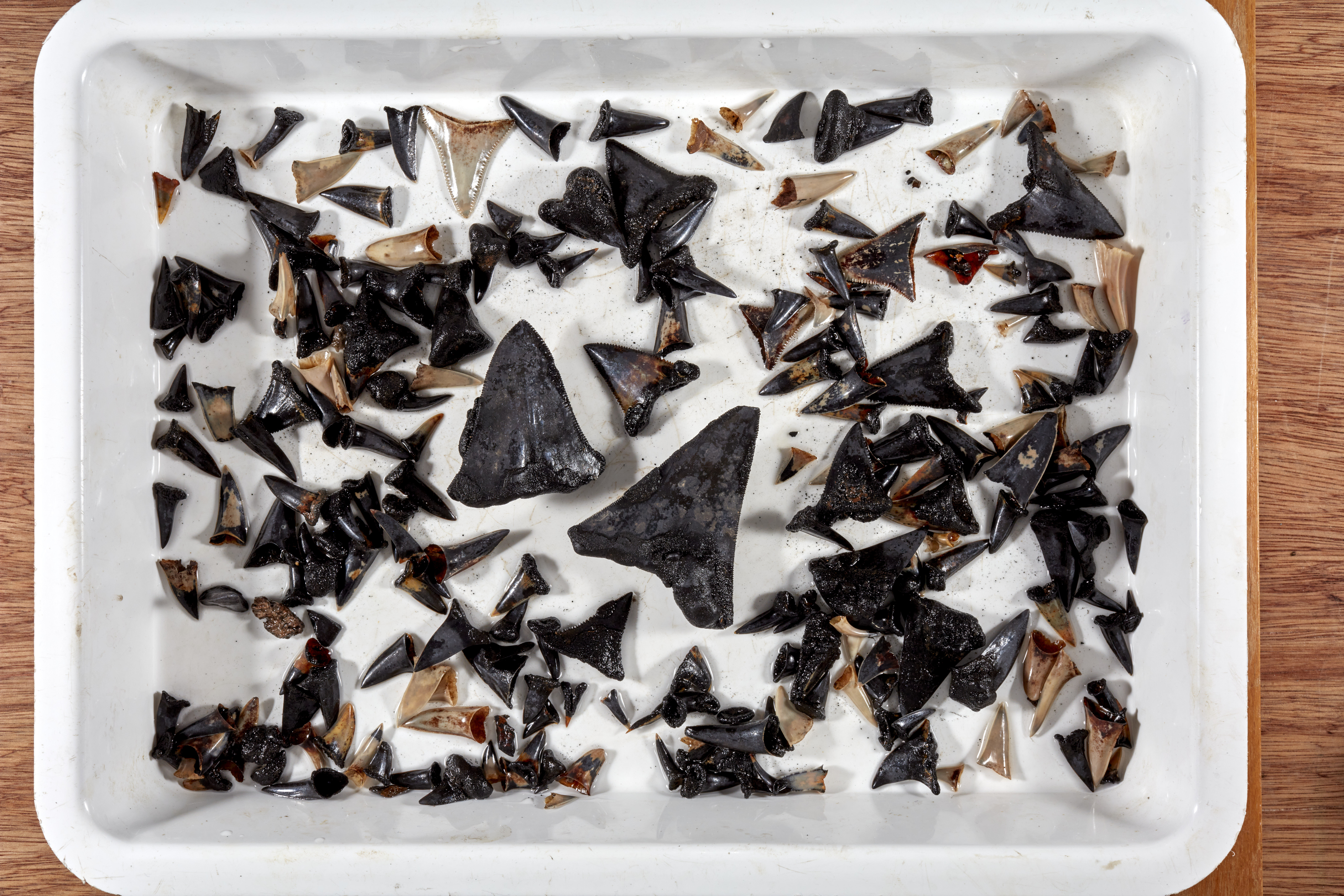An underwater shark graveyard, housing hundreds of fossilized shark teeth, has been discovered off the coast of Western Australia.
An underwater shark graveyard housing hundreds of fossilized shark teeth has been discovered off the coast of Western Australia.
Among the specimens was a tooth from the ancient ancestor of the extinct predatory monster, the megalodon.
The unusual discovery was made by researchers from the Australian National Science Agency (CSIRO) during a biodiversity survey ( published on their website ) in the new Cocos (Keeling) Islands Marine Park.
During these studies, the researchers cast nets into the water to take samples of the different species of animals that live there.
Dianne Bray, senior collections officer at the Victoria Museum Research Institute who was part of the trip, told ABC News that the team was initially disappointed with what their net had thrown up. “Initially we thought it was full of sediment and manganese nodules.”
It wasn’t until they took a closer look at the content on the web that they realized what they had found.
In all, about 750 shark teeth were identified, extracted from a depth of nearly 18,000 feet. “Not all of them were fossils, some were relatively recent mako sharks and two species were relatives of the great white shark.”
Perhaps the most exciting specimen was a tooth that researchers believe belonged to the ancient ancestor of the now-extinct megalodon shark.
“This shark evolved into the megalodon, which was the largest of all sharks, but it went extinct about 3.5 million years ago,” Glenn Moore, the WA Museum’s curator of fish, said in the statement.
The megalodon is a prehistoric predator dating back at least 20 million years. Its name literally means “big tooth,” and the beast definitely lived up to its name. Megalodons are estimated to have grown to a length of 65 feet, and their teeth are typically the size of a human hand.
Moore said it was amazing to find so many teeth in such a small area of the seafloor.
“I’ve never seen anything like it, never heard of anything like it,” he told ABC News. “It is a unique opportunity to have an almost complete collection from one place.”
It is still unclear why so many shark teeth were collected from the same location. “I don’t know of any obvious explanation why they could all be together, other than maybe it was a low point on the ocean floor, so they would eventually go down,” Moore said.
These findings highlight the importance of conducting biodiversity studies on the ocean floor to gain insight into the animals that live, or once lived, in our seas.

